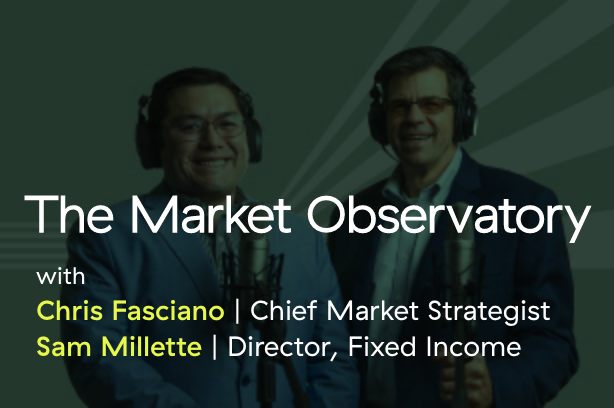Markets roared back in November, as interest rates dropped to September levels. U.S. indices were up from 8 percent to 11 percent, with the Nasdaq performing best. Fixed income showed surprising gains, and international markets rose sharply.

December 4, 2023
Markets roared back in November, as interest rates dropped to September levels. U.S. indices were up from 8 percent to 11 percent, with the Nasdaq performing best. Fixed income showed surprising gains, and international markets rose sharply.
December 1, 2023
What mattered this week in the economy and the markets? Let’s dive right in.
November 30, 2023
Interest rates are back in the news again, along with a feverish dissection of the latest meeting notes and comments from the Fed. Will the Fed cut rates or not? When? How much? Surely, the Fed has to. That means markets are going up! And so they rise.
November 24, 2023
Here's a quick update for this holiday-shortened week! From my perspective, two things mattered this week:
November 22, 2023
Once upon a time, a turkey hatched in the dead of winter. He lived in a nice warm coop, had plentiful corn and seeds to eat, and spent much of his poult-hood playing with all of the other little turkeys.
November 17, 2023
This was a week of good news pretty much across the board, which doesn't happen all that often. Congress managed to kick the can down the road again on spending, avoiding a governmental shutdown. Inflation was down across the board. And with both those risks subsiding, interest rates dropped—pushing markets higher. We continue to close in on a soft landing for the economy, and markets keep reacting to that.
November 16, 2023
Today, I want to discuss a topic that has somewhat fallen off the radar: the federal deficit and debt burden. It has been off the radar screen for a decade, since the last debt panic. The reason for that is that the panic led to real reforms that largely solved the problem. That episode—the fiscal cliff and the sequester—has a lot to tell us about today’s situation. Let's take a closer look.
November 10, 2023
It’s been a quiet week, so this will be a short post. You’re welcome.
November 9, 2023
It’s time to go to the mailbox again for questions about a central bank digital currency—a digital dollar issued by the Fed here in the U.S. This is a bit of an obscure topic, but it seems to be getting traction as something to worry about. So, let’s take a closer look.
Stock markets dropped for the third consecutive month in October, with financial markets getting hit by higher interest rates across the board. The U.S. indices were down in the low-single digits for the month, which left the Dow and the S&P 500 below their long-term trend lines. International markets also pulled back by roughly the same amount. Even fixed income was down. Financial markets were clearly in a risk-off mode.

Episode 13
November 19, 2025
Episode 12
October 14, 2025
Episode 11
September 10, 2025
Episode 10
August 13, 2025
Episode 9
July 23, 2025
The information on this website is intended for informational/educational purposes only and should not be construed as investment advice, a solicitation, or a recommendation to buy or sell any security or investment product. Please contact your financial professional for more information specific to your situation.
Certain sections of this commentary contain forward-looking statements that are based on our reasonable expectations, estimates, projections, and assumptions. Forward-looking statements are not guarantees of future performance and involve certain risks and uncertainties, which are difficult to predict. Past performance is not indicative of future results. Diversification does not assure a profit or protect against loss in declining markets.
The S&P 500 Index is a broad-based measurement of changes in stock market conditions based on the average performance of 500 widely held common stocks. All indices are unmanaged and investors cannot invest directly in an index.
The MSCI EAFE (Europe, Australia, Far East) Index is a free float‐adjusted market capitalization index that is designed to measure the equity market performance of developed markets, excluding the U.S. and Canada. The MSCI EAFE Index consists of 21 developed market country indices.
One basis point (bp) is equal to 1/100th of 1 percent, or 0.01 percent.
The VIX (CBOE Volatility Index) measures the market’s expectation of 30-day volatility across a wide range of S&P 500 options.
The forward price-to-earnings (P/E) ratio divides the current share price of the index by its estimated future earnings.
Third-party links are provided to you as a courtesy. We make no representation as to the completeness or accuracy of information provided on these websites. Information on such sites, including third-party links contained within, should not be construed as an endorsement or adoption by Commonwealth of any kind. You should consult with a financial advisor regarding your specific situation.
Member FINRA, SIPC
Please review our Terms of Use.
Commonwealth Financial Network®